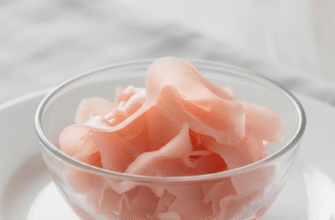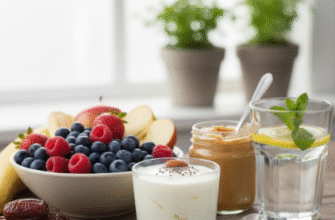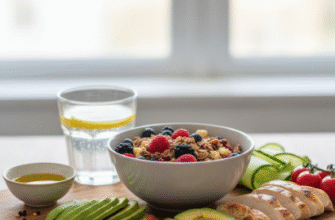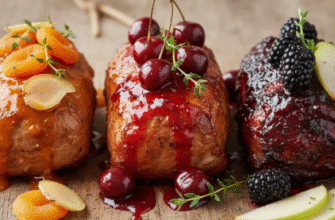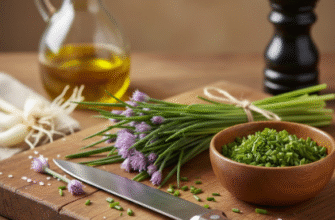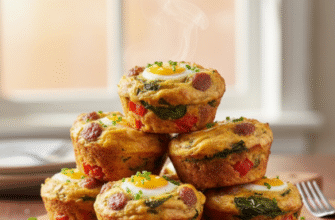Venturing into the world of gluten-free baking opens up a fascinating array of alternative flours, each with its own unique character. Among the most intriguing and versatile is buckwheat flour. Despite its slightly misleading name, buckwheat has absolutely no relation to wheat. It’s a powerhouse of flavor and brings a distinct personality to baked goods, moving far beyond being just a simple substitute.
Getting to Know Buckwheat Flour
So, what exactly is this stuff? Buckwheat is technically a pseudocereal – a seed that’s consumed like a grain. The seeds are ground down to create the flour. You might find different types: light buckwheat flour, made from hulled seeds, has a milder flavour and lighter colour, while dark buckwheat flour includes the hull, resulting in a more robust, earthy taste and a darker, often speckled appearance. Most commonly available buckwheat flour tends lean towards the darker side.
The flavour is its defining characteristic: nutty, slightly earthy, and noticeably distinct. It’s not trying to mimic wheat; it’s proudly offering something different. This bold taste can be a huge asset in certain recipes, adding depth and complexity that other gluten-free flours might lack. However, it also means it needs to be handled thoughtfully.
Why Choose Buckwheat for Baking?
The most obvious reason is its naturally gluten-free status. For individuals with celiac disease, gluten sensitivity, or those simply choosing to reduce gluten intake, buckwheat flour is a safe and flavourful option. But its appeal extends beyond that.
Its unique flavour profile can elevate simple recipes. Think of the classic buckwheat pancakes or the traditional French galettes – their character comes directly from the buckwheat. It adds a rustic, wholesome quality that’s hard to replicate. Furthermore, as a whole ‘grain’ (seed, technically), it brings a different nutritional profile to the table compared to refined starches often found in gluten-free blends, offering fibre and minerals.
Mastering the Art: Tips for Baking with Buckwheat Flour
Baking with buckwheat flour isn’t a direct one-to-one swap for all-purpose wheat flour. Its lack of gluten and distinct characteristics require a slightly different approach. Here’s how to get the best results:
Understand the Flavour Profile
Buckwheat’s taste is assertive. In recipes where that robust flavour is desired – like pancakes, waffles, blinis, savoury crepes (galettes), or certain rustic breads – you can use a higher percentage of buckwheat flour, sometimes even 100%. However, for cakes, delicate cookies, or lighter muffins, its flavour can be overpowering. In these cases, it’s best used as part of a gluten-free flour blend. Try starting with 25-30% buckwheat flour combined with milder flours like white rice flour, sorghum flour, oat flour (ensure certified gluten-free if necessary), or starches like tapioca or potato starch.
Address the Lack of Gluten
Gluten provides structure, elasticity, and binding in traditional baking. Buckwheat flour has none. This means baked goods made solely with buckwheat can be crumbly or dense. To counteract this, you usually need a binder. Common options include:
- Xanthan Gum or Guar Gum: A small amount (typically 1/4 to 1 teaspoon per cup of flour, depending on the recipe) helps mimic gluten’s binding properties.
- Psyllium Husk: Adds structure and moisture retention, particularly good in breads.
- Eggs: Provide binding, structure, and richness.
- Flax Eggs or Chia Eggs: For vegan baking, mix 1 tablespoon of ground flaxseed or chia seeds with 3 tablespoons of water and let it sit for 5-10 minutes to gel.
The specific binder and amount will depend heavily on the recipe type.
Manage Moisture Content
Buckwheat flour can be quite thirsty, absorbing more liquid than some other flours. You might find that your batter or dough seems thicker or drier than expected. It’s often wise to let batters containing buckwheat flour rest for 10-15 minutes before baking. This allows the flour to fully hydrate, giving you a better sense of the final consistency. Be prepared to add a touch more liquid (water, milk, oil) if the mixture feels too stiff, but add it gradually.
Embrace the Colour
Expect your baked goods to have a darker, often greyish or brownish hue compared to those made with wheat flour or light gluten-free blends. This is perfectly normal and part of buckwheat’s charm. Don’t mistake the colour for being burnt!
Experiment with Blends
Creating your own gluten-free flour blend with buckwheat as a component gives you control over flavour and texture. Some successful pairings include:
- For muffins/quick breads: Buckwheat + Oat Flour + Tapioca Starch
- For cookies: Buckwheat + Almond Flour + Potato Starch
- For pancakes/waffles: Buckwheat + Brown Rice Flour or Sorghum Flour
- For rustic bread: Buckwheat + Sorghum Flour + Psyllium Husk + Tapioca Starch
Start with established gluten-free recipes that call for buckwheat or adapt standard gluten-free recipes by substituting a portion of the existing flour blend with buckwheat flour.
Despite its name, buckwheat is not a type of wheat and belongs to a different botanical family altogether. It is a naturally gluten-free pseudocereal, related to rhubarb and sorrel. This makes pure buckwheat flour inherently safe for individuals following a strict gluten-free diet. However, always verify packaging labels to ensure no cross-contamination occurred during processing if high sensitivity is a concern.
Ideal Recipes for Buckwheat Flour
While you can incorporate it into many things, buckwheat truly shines in specific applications:
Pancakes and Waffles
This is perhaps the most classic use. Buckwheat pancakes have a hearty texture and deep flavour that pairs beautifully with maple syrup, fruit, or even savoury toppings. You can use 100% buckwheat or blend it for a slightly lighter result.
Crepes (Especially Savory Galettes)
Authentic French galettes from Brittany are traditionally made with 100% buckwheat flour, water, and salt. These savoury crepes are often filled with ham, cheese, and egg and showcase the flour’s earthy notes perfectly.
Muffins and Quick Breads
Used as part of a blend (around 25-50%), buckwheat adds moisture, a tender crumb, and a nutritional boost to muffins and quick breads. It pairs well with flavours like apple, banana, chocolate, and spices.
Cookies
Adding a portion of buckwheat flour (maybe 20-40%) to cookie recipes can result in a delightfully chewy texture and a subtle nutty background flavour. It works particularly well in chocolate chip cookies, oatmeal cookies, or ginger snaps.
Rustic Breads and Scones
While it won’t produce a light, airy loaf like wheat bread due to the lack of gluten, buckwheat flour can contribute to dense, flavourful rustic loaves, flatbreads, or scones, especially when combined with binders like psyllium husk and other GF flours.
Working with the Dough or Batter
Don’t expect buckwheat batters or doughs to behave like their wheat counterparts. They won’t develop elasticity when kneaded. Batters might seem thicker, and doughs can be stickier or more crumbly. Resting the batter, as mentioned earlier, is often beneficial for hydration. When working with doughs, lightly flouring your hands and surface with a neutral gluten-free flour (like rice flour) can help prevent sticking. Avoid overmixing batters, as this can sometimes make the final product tough, even without gluten.
Finding and Storing Your Flour
Buckwheat flour is increasingly available. Look for it in the health food aisle of larger supermarkets, dedicated health food stores, bulk bin stores, or online retailers. Because it contains natural oils (especially the dark variety with the hull), it has a shorter shelf life than highly refined flours. Store it in a well-sealed, airtight container in a cool, dark, dry place. For extended freshness, especially in warmer climates, storing it in the refrigerator or freezer is highly recommended to prevent the oils from becoming rancid.
Buckwheat flour has a distinct and relatively strong flavour compared to wheat or many other gluten-free flours. While delicious in many applications, it can dominate delicate flavours. Consider starting with a smaller percentage (25-30%) in your gluten-free flour blend if you’re unsure or baking something light like vanilla cake. You’ll also likely need binders like xanthan gum or psyllium husk for structure.
Embrace the Buckwheat Difference
Baking with buckwheat flour is an adventure in flavour and texture. It pushes you to think beyond direct substitutions and embrace the unique qualities of different ingredients. Its robust, nutty character can bring a wonderfully rustic and satisfying dimension to your gluten-free creations. Whether you’re making classic pancakes, experimenting with cookie blends, or trying your hand at savoury galettes, buckwheat flour offers a delicious and wholesome alternative worth exploring. Don’t be afraid to experiment with percentages and blends until you find what works best for your palate and your favourite recipes. Happy baking!


